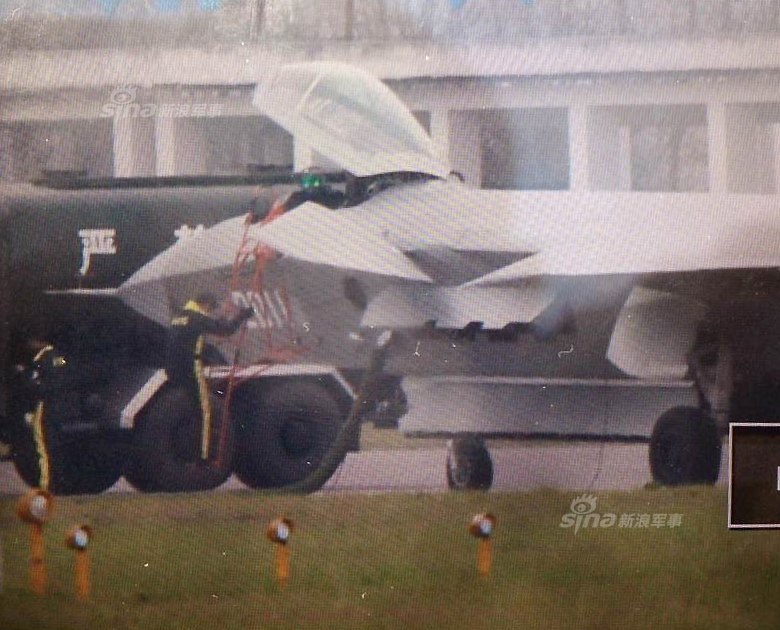Not sure if this is from today's flight. Canards look a little big.
They are huge, pilot is giving the wall climbers a "photo-op", this is the position the canards would be in to recover/hover in very high alpha flight, this is one of the real money shots of the day, we are also able to see the clipped tips. I would remind every body that the canard contribute "positively" to the total lift of the aircraft, they along with the forward fuselage strakes contribute to a huge surplus of lift that is necessary to "horse" this gal around at "very low airspeeds and in a very high alpha, Angle of Attack. Both of these factors "should" minimize "mach tuck", an aerodynamic phenomena that pitches the nose down as you are "going" supersonic, I would also remind that as you increase speed, there is less and less need for large pitch trim changes, and you want to transition from relaxed stability for "maneuvering" to more stable as the speed increases, likely one of the reasons the "tail stings" have been lengthened and "cleaned up', I am surely the aerodynamic "cleanup" of the lerx and intakes, promotes a much "smoother flow of air into and around the forward fuse/wing juncture, making for less "buffet" as you make the many transitions through each speed range, optimizing the good flying qualities of the J-20.








